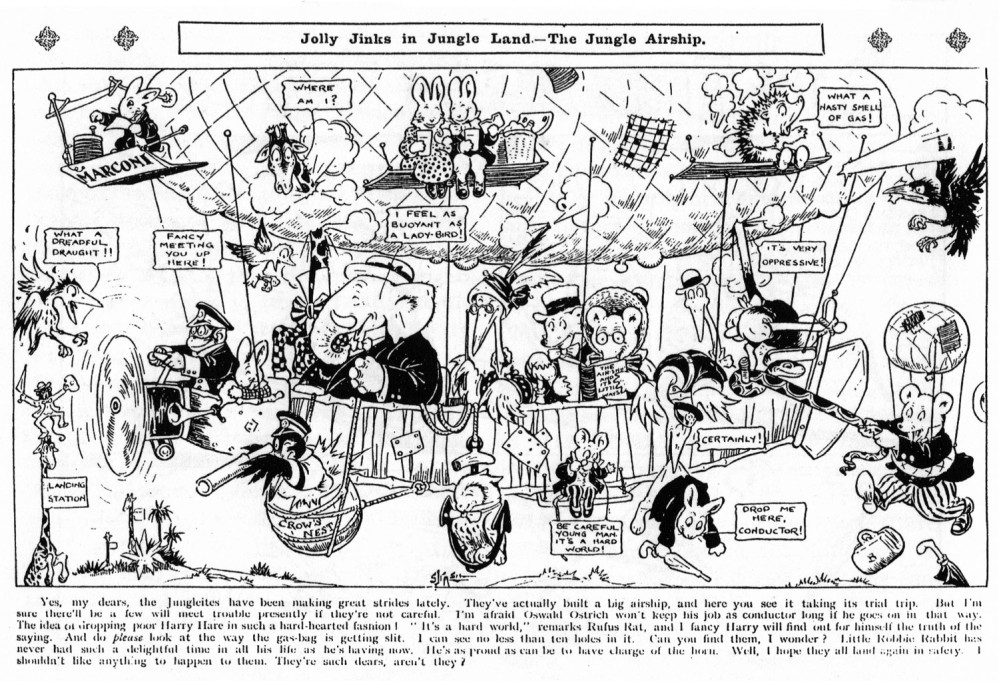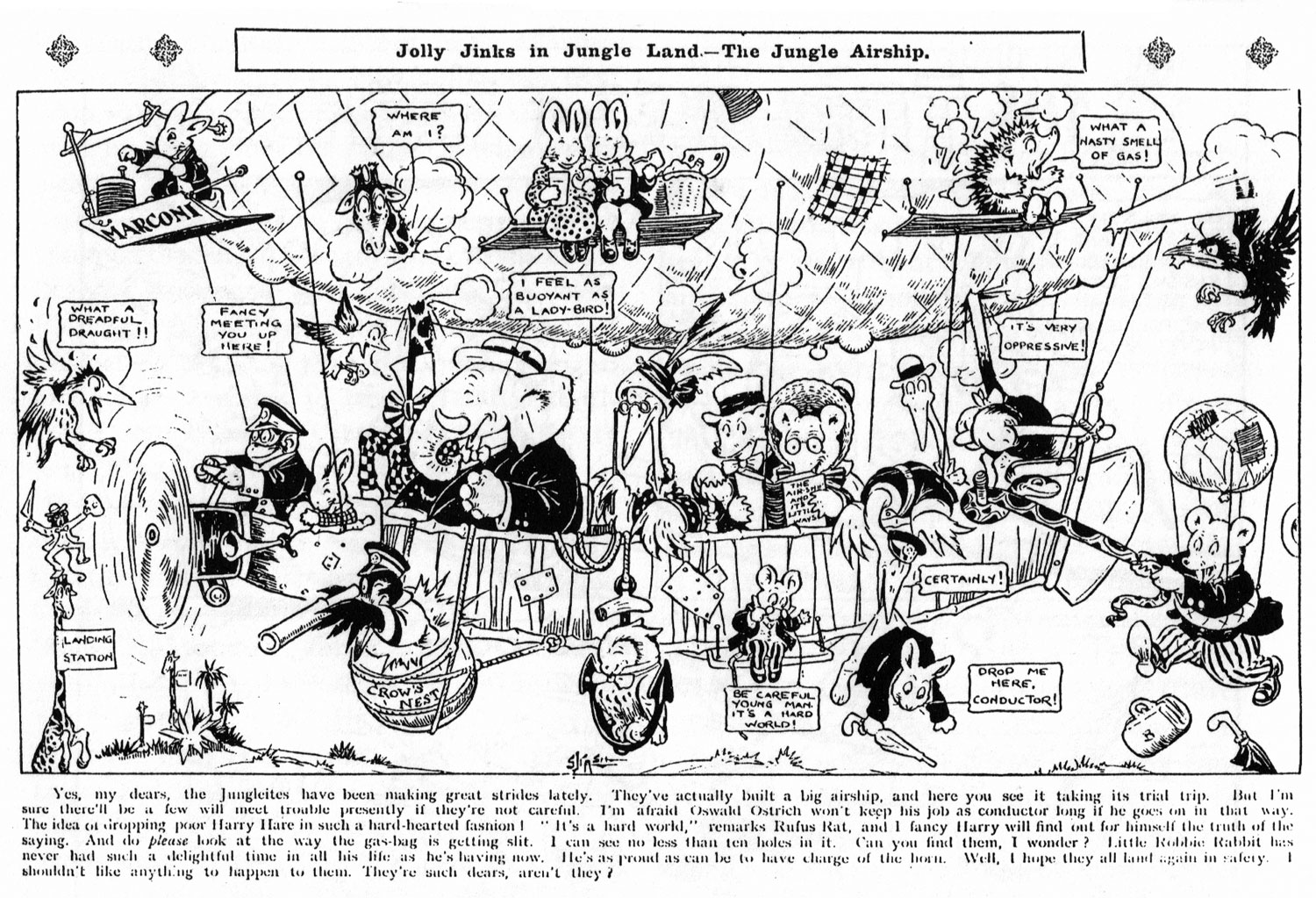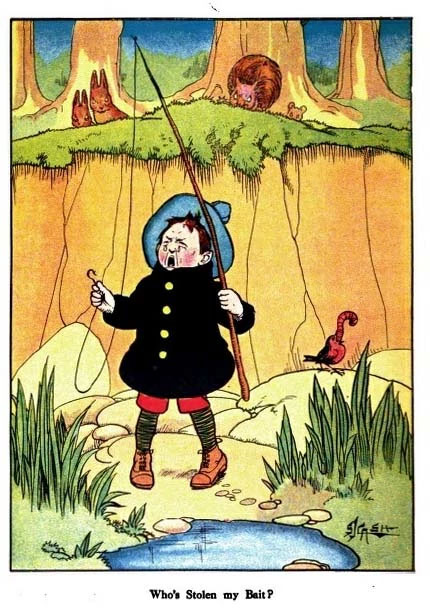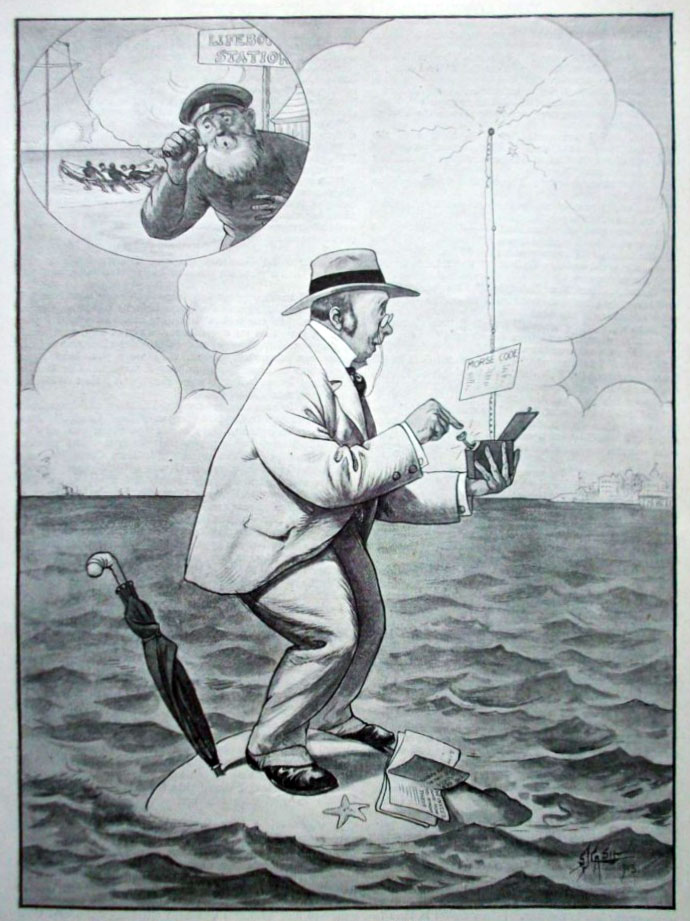S.J. Cash was an early British 20th-century comic artist and children's book illustrator. He is mostly known for his work for the nursery comics published by the Amalgamated Press.
Early life and career
Stavert Johnstone Cash was born in 1884 in Chorlton, Lancashire, as son of a journalist. In 1906, he started illustrating for Boy's Own Paper, a moralistic Christian story paper published by the Religious Tract Society. One of his drawings for this magazine even predicted the invention of the mobile phone as early as 1914! Around the same period, he made illustrations for Cassell's children's magazine Little Folks.
Illustration for Little Folks (1912).
Amalgamated Press
In the late 1900s, Cash began his association with Alfred Harmsworth's Amalgamated Press, where he became a regular artist for the nursery comics. He appeared in The Playbox alongside colleagues such as Mabel Lucie Attwell, Mabel Francis Taylor and Julius Stafford Baker II. In their pages, he created comic series like 'The Furry Fluffkins' (1909). For The Rainbow, the newly launched color supplement of The Daily Mirror, he drew 'Rainbow Cats' Colony' (1914). He additionally made 'Jolly Jinks in Jungle Land' (1915) and 'Fairy Farm' (1921) for Puck. Another comic strip about a farm, 'Funland Farm' (1928) could be read in Little Sparks while 'Billy and Bobby Blackbird' (1921) lightened up pages in Bubbles and the Children's Fairy.
Tiger Tim's Weekly
Cash's work additionally appeared in Tiger Tim's Weekly, where his 'The Merry Mice' (1921) and 'Dr. Grunter and his Scholars' (1935) ran. Years later, he also joined the new version of Playbox, this time as the continuation of Jungle Jinks. For this publication, he created 'The Tiny Tots of Sleepy Town' (1925), 'Tiny Tim' (1928), 'The Animal Alphabet' (1929) and 'Puss in Boots' (1936). Later in his career Cash drew the comic strip 'Jolly Farmer Field' (1939) in Happy Days.
Death
Stavert Johnstone Cash passed away in 1958 in Bucklow, Cheshire.
'A Vision of the future. The Pocket Marconigraph. Tapping off a Message for Help' (The Boy's Own Paper, 1914). Note how this "pocket marconigraph" seems to have predicted our modern-day cellphones, invented in the late 1970s.





